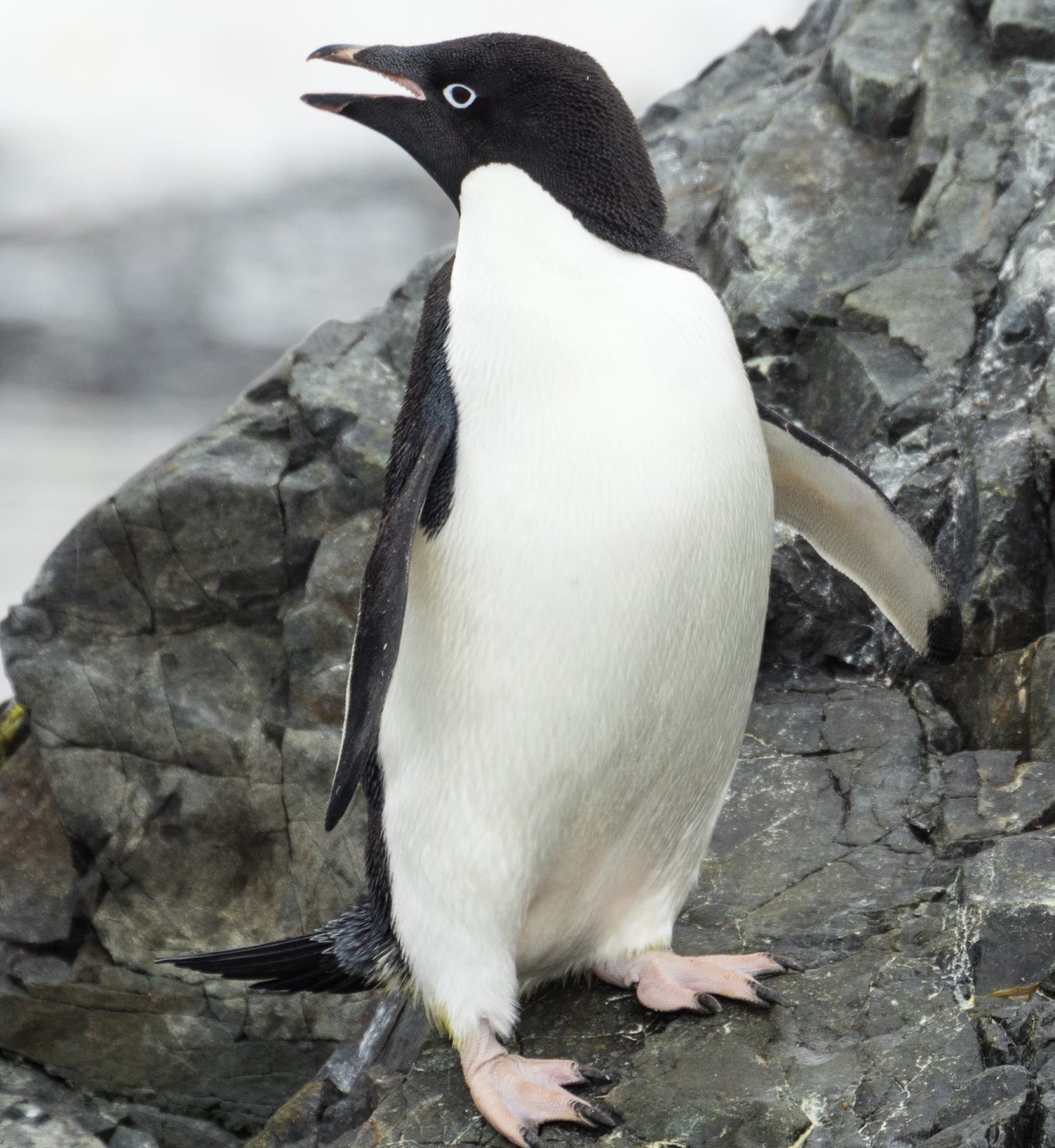
Adelie penguin
This is a species which is common around the whole coast of Antarctica (and here only). Funnily enough, this makes it the most widely distributed species, which is perhaps less surprising when you see its range map (to the right). It has a population of around 10 million and increasing, so it is doing very well.
One of only 4 true Antarctic species, it breeds on the land of antarctica. Once the Adélie penguin is done, the majority of the population moves to ice floes, and offshore islands in order to moult, though a small number remain on Antarctica, for this process.
One thing that changed around 200 years ago, was a sudden shift from mostly eating fish, to mostly eating krill (by looking at penguin shells, this can be shown that prior to 200 years ago the penguins diet had remained very similar for around 38,000 years. This is down to our slaughter of the baleen whales and fur seals, which for a time greatly reduced the competition for these food-sources.
Several species of jellyfish, which were formerly only eaten very rarely are now taken (similar preferences were found in the little penguin, yellow-eyed penguin and Magellanic penguin.) far more commonly.
Breeding occurs between October and February, and 2 eggs are laid, and are then incubated for 32-34 days (parents take turns with turns lasting around 12 days). Given that the air temperature lies between -2 and -19 degrees Celsius. In March, when not very old, both adults and young return to the sea,
Living on sea ice, but needing bare rock to breed, there has been a reduction of 65% in the number of penguins on the Antarctic peninsular over the last 25 years. Some young of this species have been seen, getting confused, often having not seen other penguins interacting, and will attempt to breed with other males, dead females or indeed young. Due to where this is happening most, there is a fear that this is a result of climate change, and therefore is only going to get worse.
They migrate north in the winter months, to their winter foraging grounds. During this time of year, the sun does not rise in the Antarctic circle and as a result the ice expands around the edge of the continent. After the winter, the penguins return to the edge of this ice, and follow it back until it reaches the coast of Antarctica once again. These treks range between 8100 miles to a record of 10,900 miles.
There is little fresh water, and their diet is highly salting (krill) which can cause problems. The parents do try to mitigate this. Both can excrete salt through nasal glands, which helps reduce concentrations which could otherwise become a fatal load on their kidneys.
Threats to adult Adélie penguins include leopard seals. which regularly hunt them, while giant petrels and orca will occasionally kill them. South polar skuas, and giant petrels kill many chicks and eat eggs as well (though the South polar skuas have the biggest impact on populations. Kelp gulls and snowy sheathbills also prey on chicks and eggs.
A 2014 census, done by satellite, but using areas which were known to host Adélie, was found to be highly successful. They did this by looking for the staining of the ice that accompanies so many living species (this staining was as a result of their droppings). This census found roughly 3.79 million breeding pairs, spread across a total of 251 different breeding colonies. It would appear that specific colonies are preferred, with 5 containing 750,000 breeding pairs, and in 2018 a colony containing 1.5 million breeding pairs was found. Whether this is as a result of changing conditions (or threats), or a natural behaviour, is something that has not yet been scientifically settled.
This species is one of the easiest species to be accessed for ecotourism. Lying on the edge of the continent, they are one of the most commonly seen.
The below video is about this penguin species.
Below this, I have included my usual collection of articles on this subject (as always, there may not be many articles on this subject so far; we hope that in the future this will change, and we are eager to have articles written by researchers and conservationists.
This site is intended to become a marketplace for wildlife travel, we are eager to be able to offer ecotourism of all kinds on this site. If you have an outfit that takes people to see this species or any other, click on list your wild place on the home page (or click here). As we start to have people listed, who can help you see this species, these will appear below the articles.